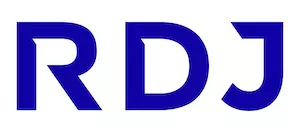In the second of our series of Insights into the Government's guidance for businesses as they begin returning to the workplace, we look at the requirements for the appointment of a Lead Worker Representative, their training and their function under Part C of the National Return to Work Safely Protocol ("the Protocol"). We also look at the helpful additional checklists and templates published recently by the Health and Safety Authority ("the HSA").
In our last Insight, we looked at the requirement for preventative planning to avoid the spread of COVID-19 in the workplace, which you can read here.
Now we are moving on to the importance of engagement and communication between employer and employee, as mandated by the Protocol. Key to that requirement is the appointment of a Lead Worker Representative to act as a conduit between employer and employee, to assist in the implementation of measures and monitor adherence to the measures to prevent the spread of COVID-19.
Appointment of Lead Worker RePresentative(S)
The Protocol provides that an employer will appoint 'at least one lead worker representative'. On choosing this representative, the only guidance given is 'an employer will appoint.' which suggests that it is at the discretion of the employer to select the lead worker representative.
This is in contrast to the selection of safety representatives under section 25 of the Safety, Health and Welfare at Work Act 2005, which provides that "employees may, from time to time, select and appoint from amongst their number at their place of work a representative (in this Act referred to as a 'safety representative')". This provision enables employees to select their own safety representative. Once this representative has been elected, there can be no question of the employer's objecting to the particular candidate chosen, unless there was some illegality attaching to the selection.
It may be that the employer appointment within the Protocol is aimed at assisting smaller organisations, by allowing them to appoint their existing safety representative to the technically separate role of Lead Worker Representative.
The Protocol mandates the appointment of 'at least one lead worker representative', however it recommends "the number of representatives appointed will, ideally, be proportionate to the number of workers in the workplace". No exact number has been specified on the ideal ratio of worker representatives to workers. Indeed, under the Safety, Health and Welfare at Work Act 2005, the employer is only obliged to ensure that at least one safety representative is elected but can agree more than one representative. However in terms of assessing the number of Lead Worker Representatives to be appointed under the Protocol, employers will need to be cognisant of staff numbers, the geographic and physical spread of their sites of operation and the operational divisions (including shift times) to ascertain in practical terms whether the function can be met by the number of appointees proposed.
Lead Worker Representative: Engagement and Communication
Once appointed, employers are required to have "regular and meaningful engagement with their worker representative" and ensure they "have a structured framework to follow within the organisation to be effective in preventing the spread of the virus".
The role of the lead worker representative can thus be broken down into the following:
- To work collaboratively with the employer to assist in the implementation of measures and monitor adherence to the measures to prevent the spread of COVID-19.
- To support the implementation of the measures identified in the Protocol alongside the COVID-19 response management team
- To ensure they are clearly identifiable in the workplace.
The role of the lead worker representative is distinct from the role of the safety representatives "selected or appointed under the Occupational Health and Safety legislation". Although the roles are separate, in practice the duties may overlap. The employer is required to communicate with safety representatives and consult with workers on safety measures to be implemented in the workplace. The employer should use the appointed occupational safety and health officer or an external competent person to ensure the effective implementation of changes to work activities, and the implementation of infection prevention and control measures in the workplace.
Training FOR Lead Worker Representative
Once appointed, the lead worker representative is entitled to "receive the relevant and necessary training by their employer", what this training consists of has not been advised. Depending on the nature of your business, we would advise that the following areas might be considered for inclusion within any training:-
- An overview of some of the broad, basic employee obligations to their own and others safety arising under health and safety law and a broad overview of the Return to Work Protocol, highlighting the role of Lead Worker Representative;
- How to undertake the role, in terms of communication from and to the wider staff grouping they represent, issues of confidentiality and data protection, how to gather, document, and record the progression of queries raised and followed up.
- Guidance on issues such as hygiene, social distancing and the latest up to-date advice and guidance on public health (including where to seek regular updates);
- Guidance on any supports available for staff, such as occupational health, employee assistance programmes or HR Policy support;
- Furnishing of the HSA Checklists (see below) as an indication of the likely areas to be covered.
It is assumed this will include training the lead worker representative on issues such as hygiene, social distancing and the latest up to-date advice and guidance on public health. In practise, the lead worker representative will require reasonable time-off, without loss of remuneration, both to "receive the relevant and necessary training" and to carry out the function.
Finally, as issues around COVID-19 Return to work are expected to give rise to grievances and potentially even protected disclosures, it would be worth considering what kind of awareness raising role might be explored for the Lead Worker Representative(s) to best manage and steer such issues into their appropriate policy.
Checklist and Templates
The HSA have prepared a number of checklists and templates to help prevent the spread of Covid-19 in the workplace. They have been drafted based on, and should be read in conjunction with, the Protocol. These can be accessed here.
There is a template Return to Work Form and COVID-19 Response Plan which will need to be amended for each workplace. There is also a specific checklist for the Lead Worker Representative(s), which includes questions, and action points, which will form part of a structured framework for lead worker representatives as outlined in the Protocol. The practical style of questions to address, include the following:
"Have you been provided with information and training in relation to the role of Worker Representative?"
"Have you been asked to walk around your workplace / work area daily and check that the control measures are in place and are being maintained?"
"Are you keeping a record of any problems, areas of non-compliance or defects and what action was taken to remedy the issue?"
"Are you making yourself available to fellow workers to listen to any COVID-19 control concerns or suggestions they may have?"
"Do you know what supports are available if you are feeling anxious or stressed and will you pass this information on to your fellow workers?"
Such questions give an indication of what is expected of the function of the Lead Worker Representative(s).
Practical considerations
In summary, with regard to the Lead Worker Representative(s), employers should take the following steps under the Protocol:-
- Choose the number of worker representatives you will appoint and decide the selection method;
- Design and roll out an appropriate initial training for the Lead Worker Representative (including input from any occupational health services);
- Circulate the HSA checklists and templates to lead worker representatives.
In our final Insight in this series, we look at Part E of the Protocol which sets out the steps that must be taken by employers in consultation with worker representatives.
Article originally published on 26 May 2020
The content of this article is intended to provide a general guide to the subject matter. Specialist advice should be sought about your specific circumstances.


